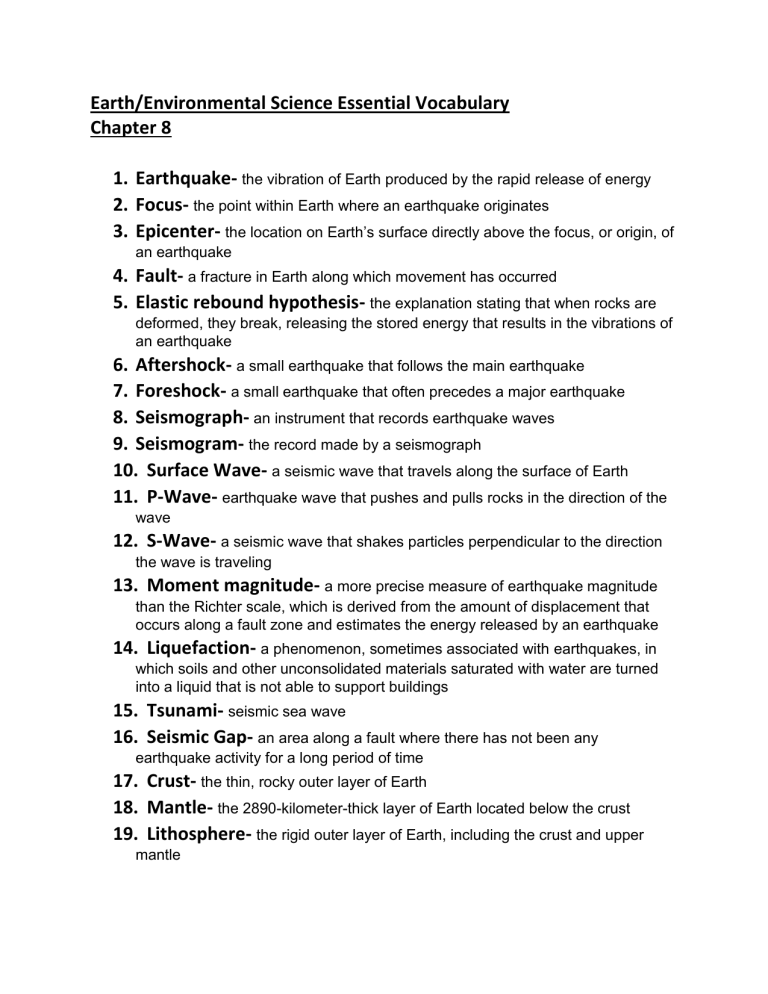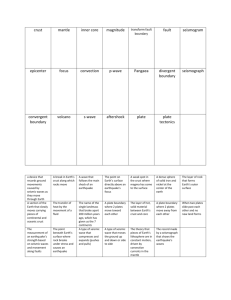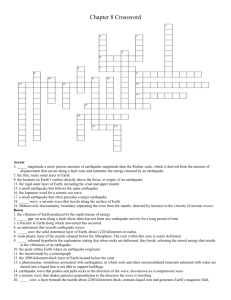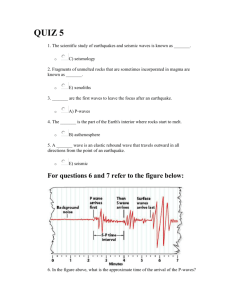Earth/Environmental Science Essential Vocabulary Chapter 8 1

Earth/Environmental Science Essential Vocabulary
Chapter 8
1.
Earthquake- the vibration of Earth produced by the rapid release of energy
2.
Focus- the point within Earth where an earthquake originates
3.
Epicenter- the location on Earth’s surface directly above the focus, or origin, of an earthquake
4.
Fault- a fracture in Earth along which movement has occurred
5.
Elastic rebound hypothesis- the explanation stating that when rocks are deformed, they break, releasing the stored energy that results in the vibrations of an earthquake
6.
Aftershock- a small earthquake that follows the main earthquake
7.
Foreshock- a small earthquake that often precedes a major earthquake
8.
Seismograph-
an instrument that records earthquake waves
9.
Seismogram- the record made by a seismograph
10.
Surface Wave- a seismic wave that travels along the surface of Earth
11.
P-Wave- earthquake wave that pushes and pulls rocks in the direction of the wave
12.
S-Wave- a seismic wave that shakes particles perpendicular to the direction the wave is traveling
13.
Moment magnitude- a more precise measure of earthquake magnitude than the Richter scale, which is derived from the amount of displacement that occurs along a fault zone and estimates the energy released by an earthquake
14.
Liquefaction- a phenomenon, sometimes associated with earthquakes, in which soils and other unconsolidated materials saturated with water are turned into a liquid that is not able to support buildings
15.
Tsunami- seismic sea wave
16.
Seismic Gap- an area along a fault where there has not been any earthquake activity for a long period of time
17.
Crust- the thin, rocky outer layer of Earth
18.
Mantle- the 2890-kilometer-thick layer of Earth located below the crust
19.
Lithosphere- the rigid outer layer of Earth, including the crust and upper mantle
20.
Asthenosphere- a weak plastic layer of the mantle situated below the lithosphere
21.
Outer Core- a layer beneath the mantle about 2260 kilometers thick
22.
Inner Core- the solid innermost layer of Earth, about 1220 kilometers in radius
23.
Moho-
It is the boundary separating the crust from the mantle, discernible by an increase in the velocity of seismic waves.









